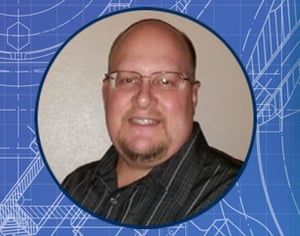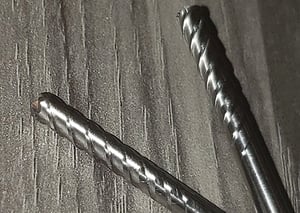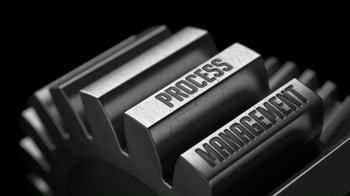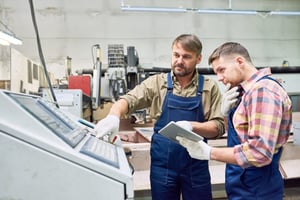Involvement in National Tooling and Machining Association is Our Way of Giving Back

Since we started the business more than 20 years ago, we’ve always believed it’s important to give back to our industry in the same way we give back to the community. We feel that way because it’s the right thing to do, and because it gives us a sense of pride that has a positive effect on morale throughout the company. It also allows us to gain early awareness and understanding of new technologies and business trends, and of the best practices that accompany them. We can then use that knowledge to continue providing our customers with the expertise and quality they have come to expect from us.
 While attending the National Tooling and Machining Association’s (NTMA’s) Annual Fall Conference in Austin, TX, this past October, I recommended that Frank Seger, our Director of Engineering, serve for the next couple of years on NTMA’s Manufacturing & Technology Team (“the Team”). I am pleased to report that my suggestion was accepted as getting involved with the Team is something we have been contemplating for a while. That’s because participation, if done right, requires a significant time commitment.
While attending the National Tooling and Machining Association’s (NTMA’s) Annual Fall Conference in Austin, TX, this past October, I recommended that Frank Seger, our Director of Engineering, serve for the next couple of years on NTMA’s Manufacturing & Technology Team (“the Team”). I am pleased to report that my suggestion was accepted as getting involved with the Team is something we have been contemplating for a while. That’s because participation, if done right, requires a significant time commitment.
 Although we are longtime members of NTMA, which provides opportunities for U.S. companies in the precision manufacturing industry to network and develop best practices, Frank’s involvement on the Team is the first time someone from Tru-Edge has served on an NTMA committee. The Team holds monthly meetings to develop best practices for members by providing accurate and timely information on current and emerging technologies that can improve productivity, competitiveness, quality and profitability among NTMA’s 1,300 members that represent more than $30 billion in annual sales.
Although we are longtime members of NTMA, which provides opportunities for U.S. companies in the precision manufacturing industry to network and develop best practices, Frank’s involvement on the Team is the first time someone from Tru-Edge has served on an NTMA committee. The Team holds monthly meetings to develop best practices for members by providing accurate and timely information on current and emerging technologies that can improve productivity, competitiveness, quality and profitability among NTMA’s 1,300 members that represent more than $30 billion in annual sales.
With the Internet of Things (IoT -- connectivity of electronics, appliances and other devices or equipment to enable quick and efficient data collection and data processing), Artificial Intelligence (AI -- the process by which a computer’s algorithms mimic a human’s ability to learn, reason and make decisions) and Big Data (the process of synthesizing unrelated sets of information and using it to competitive advantage) becoming more prevalent in manufacturing environments, we want to be at the forefront of adding to the knowledge bases of those fields, and of using them to benefit our customers.
If you follow sports – particularly baseball, basketball and hockey because a football schedule has too few games to provide “statistically significant numbers” and too much player motion that goes unquantified (think offensive linemen and special teams) – you know how significantly the use of data has increased over the past decade with respect to evaluating players’ abilities to perform overall, as well as in various game situations.
The same advances in computing power that have exponentially increased the use of data analytics in sports have made their way into the world of precision tooling manufacturing and tool life management. We want to be a company that’s always ahead of the latest trends so customers, strategic partners, and even suppliers and potential new hires, seek us out. That commitment to being at the forefront of technological and business innovation also has the potential to turn competitors into customers if they don’t have the capabilities or inclination to solve the most challenging problems with innovative solutions.
We also want to be a company that uses best practices in all aspects of our operations because it helps our customers, first and foremost, and also helps us rest assured that there’s little or nothing else we need to do more of to help ensure that we’re providing the best products, services and work environment.
These types of forward-thinking strategies and tools are what we hope to share with the NTMA via Frank’s participation on the Team.
Demonstrating the Principles of Leadership

We believe in being a leader in all aspects of our business. That idea is exemplified by our recent development of disposable orthopedic instruments. We created these reamers for surgical drilling at the request of a customer by applying our collective technical expertise and creativity to the challenge. The reamers are a tremendous source of pride for everyone in the company because they demonstrate our ability to meet highly demanding specifications, including an ISO 14385:2016 certification for medical devices, and quick turnaround times.
They are also a result of unconventional thinking and of believing that every piece of knowledge needs to be applied in solving a customer’s problem or meeting a customer’s challenge – proactively or reactively – or it becomes merely information. Our ability to convert information to data improves daily, and I expect it to accelerate as our involvement with the Team strengthens, as we gain exposure to what others are doing and as we collect enough pearls of wisdom to string together for the benefit of our associates, customers, strategic partners and vendors alike.
Investing in Our Beliefs

Through Frank’s involvement on the Team, we expect to put ourselves in a position to “walk the walk and talk the talk” better than if we were just reading reports, talking to Team members or attending seminars and getting information second-hand.We have begun internal discussions about research inquiries that Frank will suggest to the Technology Team at upcoming meetings. We’ll be sure to keep you informed about ideas that the Team believes are worth investigating, and we’ll pass along the reports of Team findings as appropriate.
If you have suggestions of issues we should explore, let Frank know so he can run them by us, and by the Team at NTMA. We’ve always
been believers that it’s best to propose ideas for consideration – no matter how far-fetched they may be – because sometimes you may find inspiration or encouragement in the most unexpected places at the most unforeseen times.
As others within the company can attest, many of our best ideas about any given aspect of our business have resulted from unconventional thinking that would have been rejected outright in many other companies.
Now, don’t get the idea that we’re completely off the wall, but as engineers and machinists, we’re wired to separate ideas into their component parts and weigh the merits of each component accordingly. By working together and seeing the whole field, the resulting discussions and analyses have allowed us to see opportunities where others may have seen obstacles.
Maximizing Value of Capital Expenditures
 Our top priority as a member of the Team will be to improve our ability to make the most informed decisions possible on the capital expenditures we deploy for software and hardware that power the equipment and systems we use on the shop floor, as well as in our business operations. Specifically, we want to make sure that we’re using the most efficient equipment and that our team members have the knowledge and skills to get the most out of that equipment so they can meet the most demanding specifications and quickest turnaround times.
Our top priority as a member of the Team will be to improve our ability to make the most informed decisions possible on the capital expenditures we deploy for software and hardware that power the equipment and systems we use on the shop floor, as well as in our business operations. Specifically, we want to make sure that we’re using the most efficient equipment and that our team members have the knowledge and skills to get the most out of that equipment so they can meet the most demanding specifications and quickest turnaround times.
One of the recurring themes I heard in Austin from my counterparts involved with Top Shops – Modern Machine Shop magazine’s formal, comprehensive benchmarking program that identifies optimal shop floor practices (e.g., minimizing setup times, establishing tooling and workholding strategies, using machine-tending robots and machine-monitoring software, earning quality certifications, cooperating with competitors in select situations, investing in worker training, defining operational and business metrics that demonstrate world-class competitiveness) is that you need a roadmap for successful implementation of capital expenditure initiatives because, as the old saying goes, “If you don’t have a destination, any road will get you there.”
 One of the most important markers on our road to excellence has been setting SMART (Specific, Measurable, Achievable, Realistic and Timely) objectives. I’ve found that to also be true among the many NTMA members I’ve had the pleasure of meeting over the years as they likely wouldn’t be in business, or certainly wouldn’t be as successful, if SMART objectives were missing from their strategic plans.
One of the most important markers on our road to excellence has been setting SMART (Specific, Measurable, Achievable, Realistic and Timely) objectives. I’ve found that to also be true among the many NTMA members I’ve had the pleasure of meeting over the years as they likely wouldn’t be in business, or certainly wouldn’t be as successful, if SMART objectives were missing from their strategic plans.
By being formally involved in the development of best practices with NTMA members who share our commitment to the industry’s future, I am hopeful that the knowledge and insights we gain from our involvement on the Team will allow us to assess our technology and business practices much faster than we could otherwise, and that it will help us improve our ability to innovate quickly and prudently.
We have developed a reputation for being a company that’s at the head of the pack when it comes to technology usage and business practices, but given how quickly those things change, mostly due to increases in computing power, it’s an advantage that can be lost quickly if one gets complacent.
Some of the things we’ve helped customers improve upon result from our engineering capabilities that help them:
- Streamline chipmaking operations
- Eliminate multiple tool setups
- Use variance reductions at point of cut
- Solve technical problems
Those are the types of challenges that I foresee us addressing through our representation on NTMA’s Tech Team because we have become highly proficient in these areas and can offer guidance to others who may be looking to reach a higher level of excellence.
As with many projects we’ve helped clients with over the years, you don’t always know what you’re getting into until the work starts. If that’s the case with Tech Team, I am confident that we’ll be able to offer experienced-based guidance in almost any given situation because our leadership team, as well as our associates, have a breadth and depth of experience, as well as a track record of solving problems in a mutually beneficial way, that has prepared us to be of service to the precision tooling industry.
 I believe we’re particularly well-positioned to help our peers nurture younger people in our industry – particularly on the customer side. That’s because we’ve stayed on top of industry trends and have come to appreciate the different perspectives that people – particularly those in the 25-40-year-old age group (Millennials) -- bring to the table. Our experience has been that they’re energetic, inquisitive and easy to work with, especially if you’re willing to make a long-term investment in the relationship.
I believe we’re particularly well-positioned to help our peers nurture younger people in our industry – particularly on the customer side. That’s because we’ve stayed on top of industry trends and have come to appreciate the different perspectives that people – particularly those in the 25-40-year-old age group (Millennials) -- bring to the table. Our experience has been that they’re energetic, inquisitive and easy to work with, especially if you’re willing to make a long-term investment in the relationship.
They want to know that we care about their needs, speak their language and are knowledgeable about their problem or challenge at the very beginning of our interactions with them. Being exposed to the latest technologies and business practices in their early stages of development and implementation can only help in that regard.
A Bridge to the Future
 I am confident that being a member of the Tech Team will be a wise investment of our time. Most importantly, it will also give us the opportunity to provide others with ideas and knowledge that can make our industry stronger and more globally competitive.
I am confident that being a member of the Tech Team will be a wise investment of our time. Most importantly, it will also give us the opportunity to provide others with ideas and knowledge that can make our industry stronger and more globally competitive.
Our involvement on the Team can also give customers a continued source of quality products and innovative thinking, as well as provide our associates with a workplace that values their contributions and allows them to reach their professional and personal goals.
How have your experiences participating in industry organizations helped your business?

